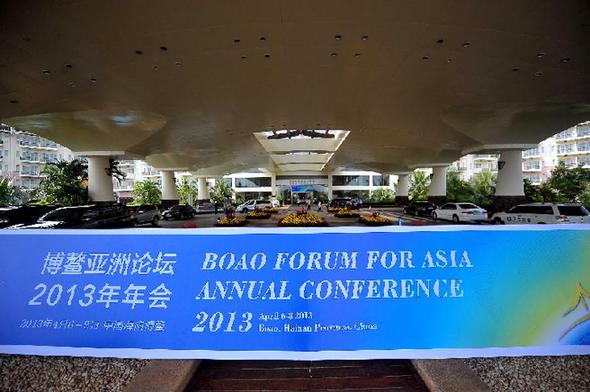Key issues at the Boao Forum
- By John Ross
 0 Comment(s)
0 Comment(s) Print
Print E-mail China.org.cn, April 5, 2013
E-mail China.org.cn, April 5, 2013
The theme of this year's annual Boao Forum for Asia is "Seeking Development for All." This is appropriate given the current problems in the global economy but when Asia remains the world's most rapidly growing region. China, as Asia's largest economy, evidently plays a key role in this situation but the Asian economies which form the center of the Boao Forum are also among the world's most rapidly growing.
The international economic backdrop to this year's Forum remains negative – particularly in developed economies. Japan's GDP is 1.7 percent below its maximum prior to the international financial crisis while GDP in the European Union is 2.1 percent below. U.S. GDP growth is anemic, only reaching 2.5 percent above its last peak five years ago. Some of the previously dynamic BRICS economies are also encountering problems – India's annual GDP growth has fallen to 4.5 percent and Brazil's to 1.4 percent.
The most recent statistics indicate further weakening against this background. U.S. business confidence slipped from 54.2 in February to 51.3 in March. Russia's GDP growth slipped to 0.1 percent in February. World commodity prices, a sensitive indicator of strength or weakness in the global economy, are 17 percent below their peaks.
In contrast China and Asian countries forming the core of the Boao Forum continue to grow rapidly. China's 7.9 percent GDP expansion to the 4th quarter of 2012 was by far the fastest of any major economy. Growth is continuing in South East Asia – on the latest data annual GDP expansion was 18.9 percent in Thailand (although this is artificially high due to recovery from flooding), 8.0 percent in Laos, 7.1 percent in Cambodia, 6.8 percent in the Philippines, 6.4 percent in Malaysia, and 6.1 percent in Indonesia. Key questions for this year's Boao Forum are, therefore, first how strong growth can be maintained amid headwinds from other parts of the world economy, and second how can this development benefit all Asians?
China plays a key role in maintaining growth throughout the region. China's economy is not yet large enough to determine the situation of the overall global economy, but it is large enough to play this role in Asia. With the exception of Japan, most major Asian economies are relatively open to trade – exports account for 35 percent of GDP in the East Asian and Pacific developing economies. China is the largest trading partner for most of these. China's ability to maintain rapid growth throughout the international financial crisis therefore allowed Asia as a whole to continue to expand and China's future economic performance will be equally critical for the region.






